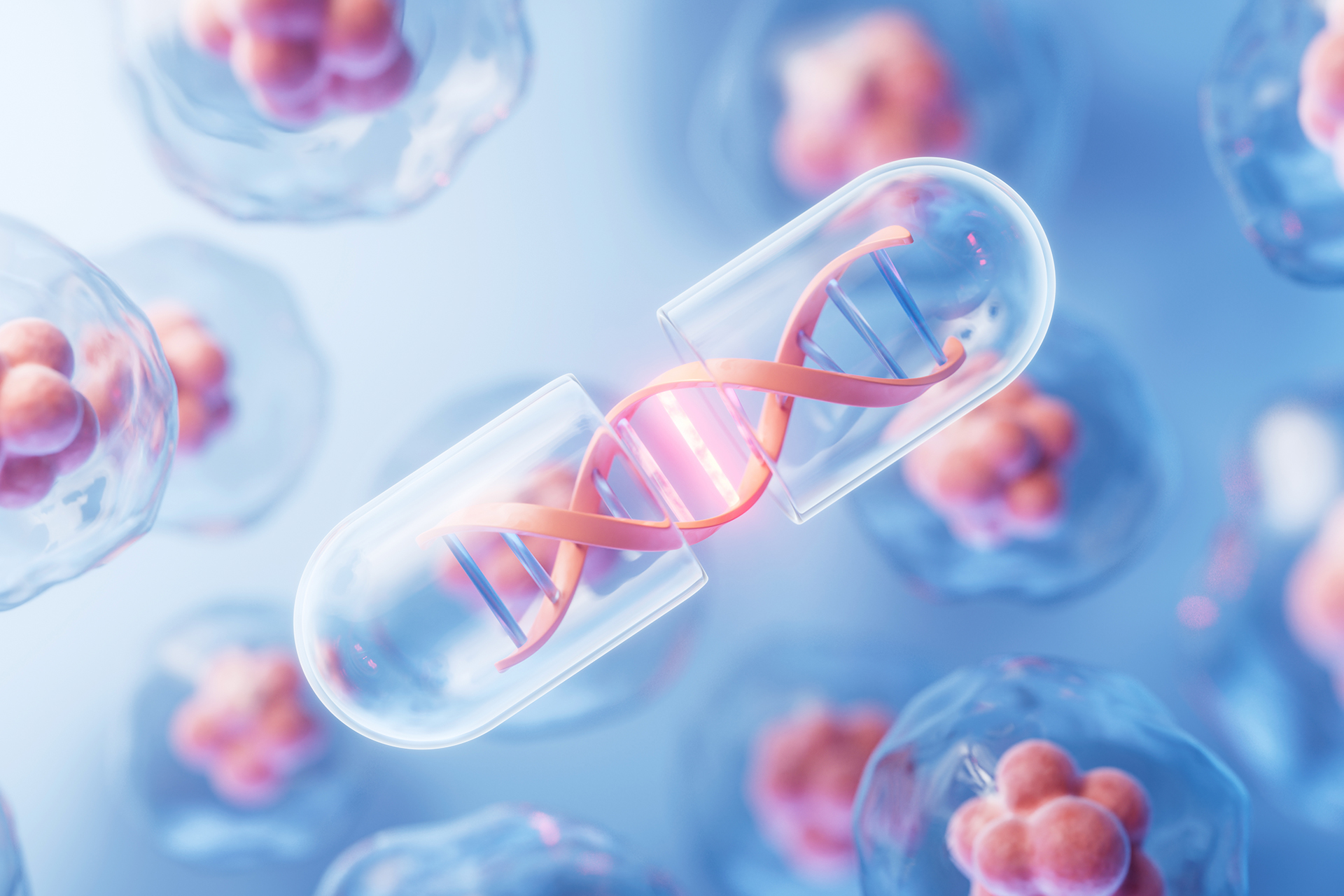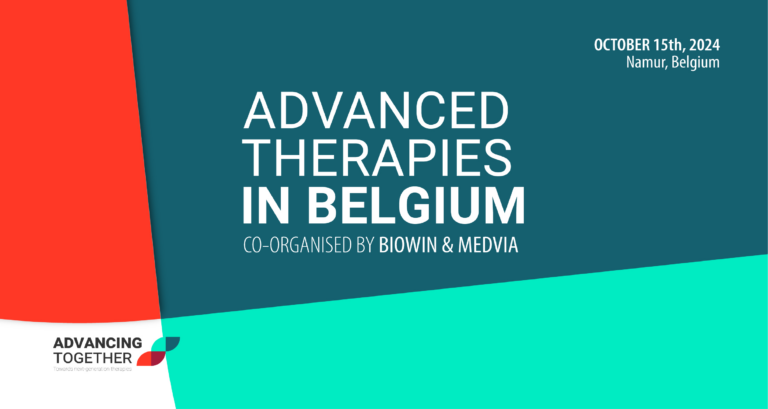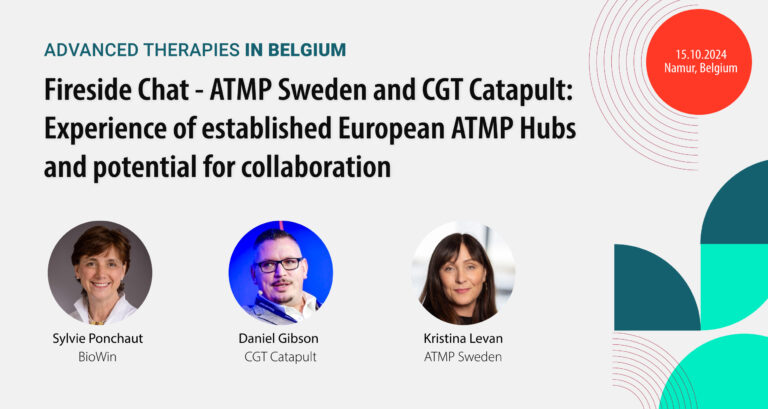This article features speakers that participated in the event Advanced Therapies in Belgium, hosted in Namur, 15 October 2024.
ATMPs (advanced therapy medicinal products) form a rapidly growing and evolving area of therapeutic drug development, expected to reach a global value of 80 billion euro in 2032. To stay in the game, organizations must be ready to establish themselves as key players amongst the 1500 companies heavily investing in ATMPs – not an easy feat when there are so many moving parts in the value chain. While it can be tempting to try to go it alone, the fastest and most intelligent way to advance is by advancing together.
The event, Advanced Therapies in Belgium, presents such an occasion, offering a space for innovative ideas and featuring speakers from the forefront of the Belgian and international ATMP innovation.
Where is Europe on the global ATMP scoreboard?
Europe is a player but not yet a lead in the ATMP ecosystem, as Sylvie Ponchaut, Managing Director of BioWin outlines: “Even though there is a lot of innovation in Europe, we’ve lost our leadership position, and we’re aware that there are many opportunities for advanced therapies, particularly in addressing age-related diseases. The US and Asia have been more proactive in adopting these cutting-edge therapies.”
“I think we need to understand how we can be a part of the global ecosystem at a more equal level with the big players,” adds Kristina Levan (Director of the Sahlgrenska ATMP Center, Sweden). “We are now seeing a decrease when it comes to ATMP clinical trials in Europe, even though they are increasing globally. I think that we need to understand how we can collaborate more on a European level to be more interesting as a partner. This knowledge could help us complement each other rather than compete against each other.”
Multiple governmental agencies and ministries are involved along the value chain, including economic and public health ministries. This makes it difficult to get everybody on the same page and make sure all the boxes are checked. “What are the reimbursement pathways that you need to go through? What are the diagnostics that you need? How do you best screen your patients to make sure that they’re eligible and they are getting the right treatments?” asks Daniel Gibson, Head of Collaborations, Cell and Gene Therapy (CGT) Catapult. “The only thing worse than not having a curative treatment is having a curative treatment which is not available. There is very little value in having a patient-benefiting therapy that is not accessible to everyone who needs it.”
The only way forward is as a strong cohesive unit, and some countries in Europe are leading the way to establish a connected and consolidated ATMP value chain.
“This knowledge could help us complement each other rather than compete against each other.” Levan
Belgium: fertile ground for ATMP innovation
Belgium fosters a supportive ecosystem for ATMP production and development. It was the first European country to launch an ATMP on the market and has an experienced regulatory agency, the FAMHP (Federal Agency for Medicines and Health Products), with expertise and experience in this area. Health networks and clusters such as BioWin, the health competitiveness cluster of Wallonia, and MEDVIA, its Flemish counterpart, also support and enable innovation by bringing these actors together, launching collaborative projects, and providing strategic consulting.
When asked what makes Belgium a good ATMP ecosystem, Ponchaut remarks that it is because “we have all the ingredients”. Belgium hosts large companies like Johnson & Johnson and UCB, small companies and startups, universities and university hospitals, and CDMOs (contract development and manufacturing organizations) that develop either cell or gene therapy products.
“We also have experienced federal agencies, the FAMHP as mentioned above and the reimbursement agency (INAMI), which is innovative in its reimbursement strategies and connected to other European ecosystems. It is clear to them that it’s absolutely necessary to innovate and discover new ways to reimburse such products.” explains Ponchaut.
ATMP-PIT: The captain of Wallonia’s ATMP team
In the arena of ATMPs, Belgium is leading the way and can help other countries by sharing expertise, strategies, and systemic regulatory knowledge to enable organizations to flourish. One of the means to achieve this is through the recently launched ATMP-PIT project (ATMP-Partenariat d’Innovation Technologique).
This project consolidates the value chain around ATMPs in Wallonia featuring a consortium of different actors working together in ATMP development, manufacturing, production decentralization, and more. The 26 innovative companies in this project operate along a value chain that includes more than 35 companies in Wallonia.
“…we have all the ingredients” Ponchaut
The work packages in the portfolio leverage the entrepreneurial diversity and richness of this ecosystem and have already started their activities in the short time since the project launch in 2024. “We have partners developing cell therapy products, gene therapy products, and exosomes. The service providers support the whole ecosystem,” explains Ponchaut.
The Walloon government has shown their commitment to advancing ATMPs by pledging 81 million towards this project. It will also extend this collaboration to Flanders and foster research partnerships involving both Walloon and Flemish partners. To make this commitment concrete, BioWin and MEDVIA signed an agreement in 2024 with the aim to enhance Belgian competitiveness.
Read about this agreement here: https://biovox.eu/one-event-uniting-belgiums-regions/
The organizations involved in this dynamic ATMP ecosystem come together 15 October at Advanced Therapies in Belgium. The event is organized to allow innovative entities to get to know each other better and provide a platform for exchanging ideas and launching joint projects.
Innovation beyond Belgian borders
Events like Advanced Therapies in Belgium are a great way to connect with the value chain within a country, but it would be a missed opportunity not to extend this connection internationally. This is why BioWin invited speakers from two established ATMP networks in the UK and Sweden: CGT Catapult and ATMP Sweden. Daniel Gibson (CGT Catapult) and Kristina Levan (ATMP Sweden) will discuss their different environments and approaches at the “fireside chat” on October 15th.
“We believe that if we connect the different ecosystems, we can create a critical mass of expertise. This diversity of European strategies — where some focus more on supporting companies and the economic impact, while others emphasize ensuring that all patients have access to the necessary treatments — represents a valuable mix. It may not be feasible for a single country to handle everything, hence the need for collaboration.” adds Ponchaut.
We talked to both speakers about their respective organizations, starting with Gibson: “CGT Catapult is funded by Innovate UK, so the organization is government funded. The UK has a unique infrastructure that ties together cross-industry innovators and works to translate it to meaningful impact. I think it is important to align the network that we have under a single vision, which is about delivering innovation and making the ATMP value chain sustainable and accessible to the industry. We’ve got a collaboration process which aims to empathize with multiple different stakeholders and not just the immediate person that’s having the issue.
I’m really keen for us to understand where we can create cross-linking partnerships, particularly across Europe. Many heads are better than one, in my opinion,” says Gibson.
Travelling north to Scandinavia, Levan describes the Swedish approach: “Sweden’s innovation agency has the capacity to fund a lot of different projects and initiatives. We are focusing on how to connect the different parts of the ecosystem, both to learn from each other, but also to prepare for whatever drugs or therapies are in the pipeline. We have been working on the infrastructure for manufacturing and commercialization, which is a part that we could see was very difficult for the developers.
I think we can help other countries as we set a good example of how industry, academia, and healthcare can work together to solve the big questions.”
Advancing towards the future
ATMPs are the future, although there is a lot of work left before Europe gets there.
“A colleague of mine put it well and said we need 4 industrial revolutions before ATMPs are mainstream; we also need to scale extremely fast. To reach the patients that need these therapies, we need innovation to transition to something more akin to high-value manufacturing,” details Gibson. “I think certainly over the next 10 years, we need to bring cell and gene therapies into the mainstream so they’re recognized by the general public and accessible through all healthcare systems.”
“There is very little value in having a patient-benefiting therapy that is not accessible to everyone who needs it.” Gibson
Looking back to Belgium, the future for the ATMP landscape is one of consolidation and internationalization. BioWin has the ambition to achieve international partnerships, with networks such as CGT Catapult and ATMP Sweden, in the coming years: 2025 will be the year of launch, and 2026 is when the work is implemented. These activities will be elaborated on during Advanced Therapies in Belgium.
Levan emphasizes that the best time to start laying the groundwork is now “I think it’s very important just to take small steps now rather than waiting: we should try to connect and learn from each other already. I would like to see a blossoming ecosystem with a clear and easy roadmap for the transfer from preclinical to clinical to commercial product.”
“It is about true collaboration, being open and transparent. We all have the same mission at the end the day, which is to deliver these therapies and make sure they’re available to every patient that needs it,” explains Gibson.
Ponchaut agrees “It’s really important because we still have a lot of unmet medical needs. Innovation can help bring therapeutic solutions for diseases that are not cured by classic treatments.”
The consensus seems to be that Europe can strengthen its position in the ATMP sector by integrating collaboration and innovation early on. Only by uniting the diverse strengths in innovation, regulatory expertise, and collaborative networks, can we ensure that advanced therapies are not only developed but also accessible to all who need them.




